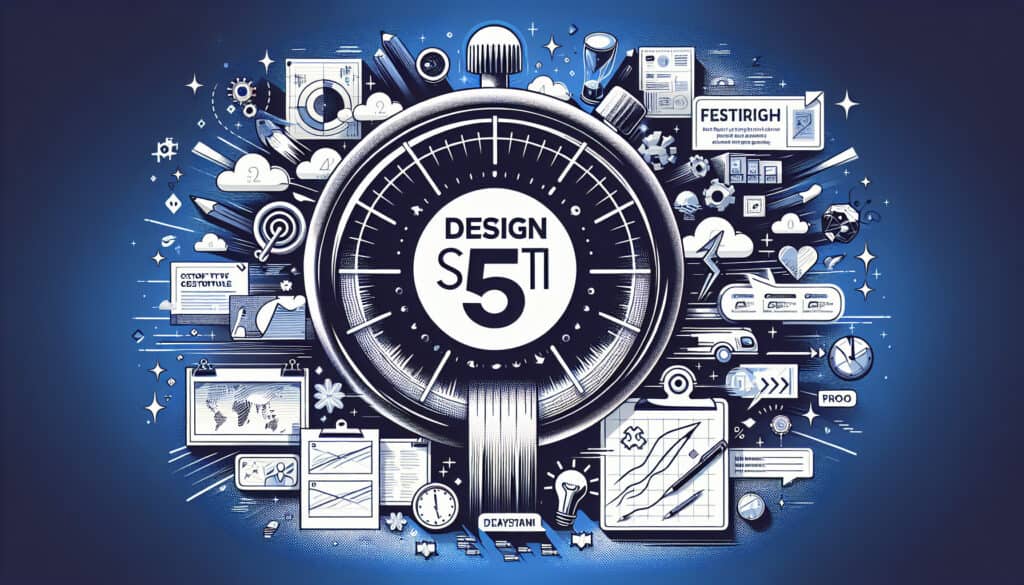A time-constrained, five-day process for answering critical business questions through design, prototyping, and testing ideas with customers.
- المنهجيات: العملاء والتسويق, الاقتصاد, لين سيجما, تصنيع, إدارة المشاريع, الجودة
سباقات التصميم السريعة

سباقات التصميم السريعة
- المنهجية الرشيقة, سباق التصميم, التفكير التصميمي, ابتكار, تطوير المنتجات, النماذج الأولية, النماذج الأولية السريعة, اختبار المستخدم, تصميم يركز على المستخدم
الهدف:
كيفية استخدامه:
- Popularized by Google Ventures, it's a structured recipe for a small team to move from a problem to a tested solution. It includes understanding, sketching, deciding, prototyping, and testing.
الايجابيات
- Produces a tangible, user-tested prototype in just one week; reduces the risk of building the wrong product; creates alignment and momentum within the team.
سلبيات
- Requires the full-time, focused commitment of the entire team for a week; can be intense and exhausting; is not a substitute for long-term product development.
الفئات:
- الأفكار, حل المشكلات, تصميم المنتج, إدارة المشاريع
الأفضل لـ
- Rapidly solving big challenges and testing new ideas with users in a structured, five-day process.
Design Sprints are particularly advantageous in industries such as technology, healthcare, and consumer products, where the need for rapid iterations and user feedback is paramount. This methodology can be employed effectively during the early project phases, such as before developing a الحد الأدنى من المنتجات القابلة للتطبيق (أفضل لاعب) or during the ideation stage of product development. Teams commonly initiate a Design Sprint when they encounter significant uncertainties or challenges that could jeopardize project timelines or budgets. Participants typically include cross-functional team members, such as product managers, designers, developers, and marketing specialists, facilitating diverse perspectives that enrich the problem-solving process. For instance, tech companies like Slack and Airbnb have successfully employed Design Sprints to design user-centric features, helping them quickly align on ideas and validate them through user testing. The sprint’s structured approach supports focused decision-making; by dedicating five days to concentrated effort, teams can overcome common pitfalls associated with protracted design cycles. The rapid nature of this methodology not only accelerates development but also enhances collaboration and morale, as team members see immediate progress and tangible results, which can be shared with stakeholders to secure continued investment or support.
الخطوات الرئيسية لهذه المنهجية
- Understand: Identify the challenge and gather insights on the user and the problem space.
- Sketch: Generate solutions individually through sketching ideas and concepts on paper.
- Decide: Review sketches and select the most promising ideas to move forward with.
- Prototype: Build a rapid, low-fidelity prototype that represents the selected solution.
- Test: Conduct user testing sessions to gather feedback and observe interactions with the prototype.
نصائح للمحترفين
- Involve diverse team members with varied expertise to enhance creativity and uncover unique solutions during the understanding and sketching phases.
- Prioritize user feedback from testing to iterate on the prototype immediately, rather than waiting for a subsequent sprint cycle.
- Use storytelling techniques during presentations to stakeholders to communicate the rationale behind design choices and foster buy-in for the next steps.
لقراءة عدة منهجيات ومقارنتها, نوصي باستخدام
> مستودع المنهجيات الشامل <
مع أكثر من 400 منهجية أخرى.
نرحب بتعليقاتكم على هذه المنهجية أو المعلومات الإضافية على قسم التعليقات أدناه ↓، وكذلك أي أفكار أو روابط متعلقة بالهندسة.
السياق التاريخي
1949
1950
1950
1960
1960
1960
1960
1940
1950
1950
1958
1960
1960
1960
1960
(إذا كان التاريخ غير معروف أو غير ذي صلة، على سبيل المثال "ميكانيكا الموائع"، يتم تقديم تقدير تقريبي لظهوره الملحوظ)















منشورات ذات صلة
استبيانات الانزعاج العضلي الهيكلي
الاختبار متعدد المتغيرات (MVT)
تحليل الانحدار المتعدد
أنظمة التقاط الحركة
طريقة MoSCoW
اختبار متوسط المزاج